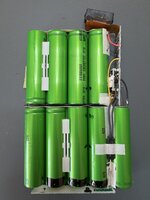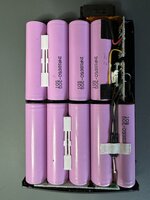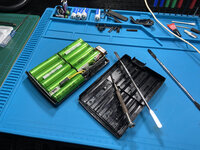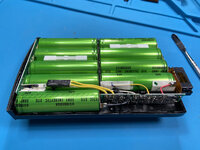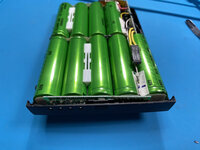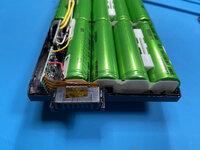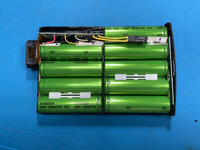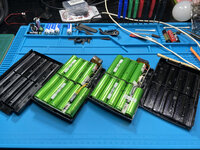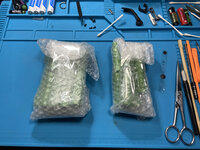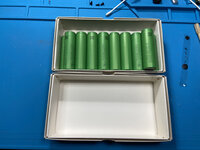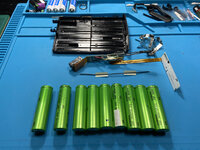So I have a Pismo which had a completely busted battery. Taking it apart, three of the cells were leaking and pressing the charge indicator button wouldn't show any signs of life. Occasionally it'd show maybe 1 flashing light but most of the time it'd show nothing. The computer didn't recognise the battery either, I'd plug it in and it'd show the expansion bay as empty (except when it would show one flashing light, in which case it'd show a battery with a red X through it).
I took it apart and replaced the cells with Panasonic NCR18650 cells connected in the same configuration as the original ones. Before spot welding the cells together, I measured the voltage across each cell at around 3.15V. I'm seeing around 10V across the output pins and the battery actually powers the machine for a little while when I unplug the power. However, I cannot for the life of me get the machine to charge the battery.
I've tried a PMU reset using the button on the back of the machine, I've also tried booting into OpenFirmware and doing the reset-nvram, set-defaults, reset-all dance to no avail.
Does anyone have any experience with rebuilding these packs and know how to get them to charge after a cell swap?
I took it apart and replaced the cells with Panasonic NCR18650 cells connected in the same configuration as the original ones. Before spot welding the cells together, I measured the voltage across each cell at around 3.15V. I'm seeing around 10V across the output pins and the battery actually powers the machine for a little while when I unplug the power. However, I cannot for the life of me get the machine to charge the battery.
I've tried a PMU reset using the button on the back of the machine, I've also tried booting into OpenFirmware and doing the reset-nvram, set-defaults, reset-all dance to no avail.
Does anyone have any experience with rebuilding these packs and know how to get them to charge after a cell swap?

